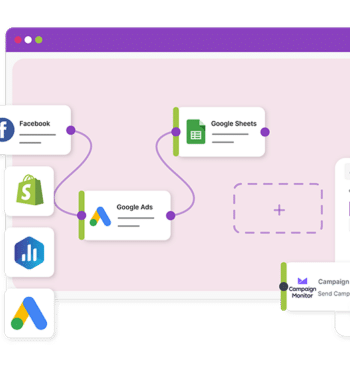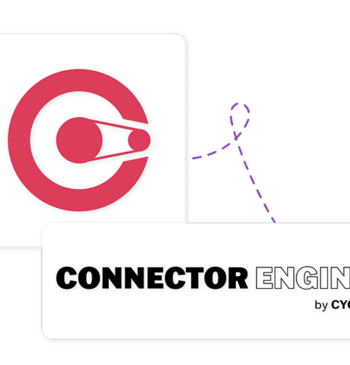10 Jul
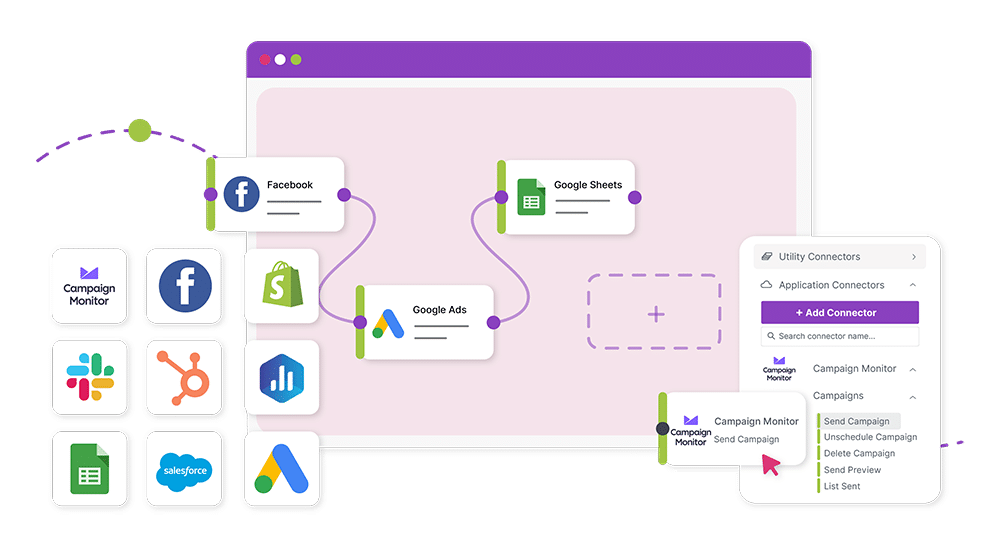
…
A marketing automation platform is a software solution that enables seamless integration and synchronisation of various marketing tools and systems.
In other words, it connects tonnes of your client’s marketing applications under one roof. Rather than you having to log in, out and switch around. It also means you can build workflows between these applications to move data from each into one centralised place.
ConnectorEngine is an example of a marketing automation platform. This solution helps streamline marketing operations for digital agencies. At the same time as enhancing data visibility, and enabling marketers to gain insights and help their clients make data-driven decisions.
Automation Platform Use Cases for Digital Marketing Agencies
Digital agencies are presented with tonnes of different marketing data from their clients. An automation platform can help make sense of all this data in centralised locations for clients. Another benefit is that you’ll be able to create and adjust workflows to reflect specific client needs. For instance, use cases can be built, repeated and customised in one place for your clients.
What do I mean by this? Well, each client may use a different CRM system or email tool but the actions taken by each may be similar. For instance, add a new contact, list email subscribers, and so on.
We’ll go through some common marketing use cases to demonstrate the capabilities of a marketing automation platform.
Data Centralisation and Analytics Use Case
Firstly, an automation solution will allow the digital agency to centralise their customer’s marketing data from multiple sources. For instance, CRM systems, email marketing platforms, social media channels, advertising platforms, and more.
By consolidating data in one place, a dashboard for instance, marketers can easily analyse and visualise the data to gain actionable insights. This connected view of data helps in understanding customer behaviour, identifying trends, measuring campaign performance, and optimising marketing strategies.
As a result, this can help digital marketing agency clients to make informed data-driven decisions about their future marketing campaigns and overall strategy.
Two potential workflows for data centralisation and analytics both are capturing clients marketing data and updating it in a centralised dashboard or database. This data as well as more from other analytic and marketing applications can then be analysed without jumping between apps.
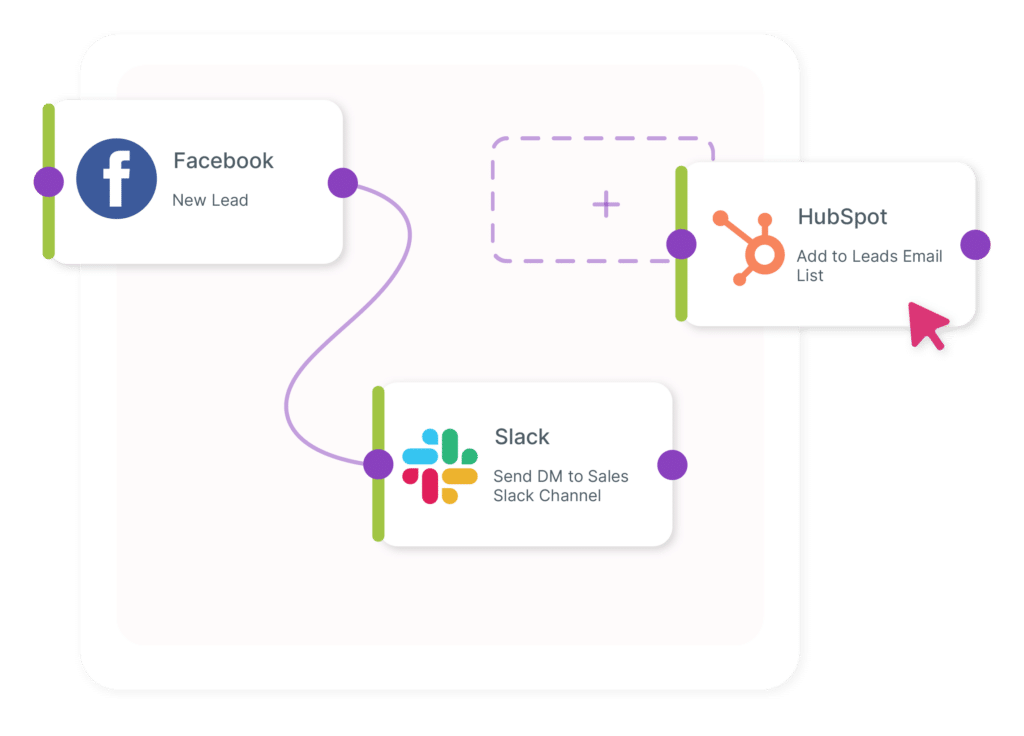
First, a Facebook ad captures a click from a user. This user enters their email address on a Shopify eCommerce form. This data is added to a MailChimp subscriber list. Then it triggers an update to the data in the email subscriber dashboard in DataDog.
Similarly, a LinkedIn ad captures a conversion from a user. This user enters their email address for a downloadable on WordPress. This information is added to Salesforce as a lead and their preferences for email communication are added to ActiveCampaign. This lead data information is updated in the sales reps’ Google Sheets database.
Campaign Automation and Orchestration Use Case
With a marketing integration platform, digital agencies can automate and orchestrate their clients’ marketing campaigns across various channels. It enables seamless coordination between different tools and systems involved in the campaign. For instance, email marketing, social media scheduling, customer relationship management (CRM) systems, and marketing automation platforms.
The digital agency can define triggers, workflows, and rules to automate tasks. These tasks could be lead nurturing, personalised messaging, customer segmentation, and campaign monitoring. As a result, this can help clients save effort and time whilst delivering a custom experience.
I’ve laid out a potential workflow for campaign automation and orchestration that could be implemented for a free trial campaign. This same workflow can be copied and customised for different customers to reflect their specific needs or use cases.
Firstly, there is a new trial sign-up from a web form who is added trialist details in HubSpot. This triggers a trial confirmation email from HubSpot and sends the trial start date notification. A delay option is added to the workflow (this is an additional tool to add further customisation). After this delay, custom content is sent. For example, ‘How to use our product successfully’. Another delay is implemented after another notification is sent to warn trial is entering the last day/week. After the trial has ended a follow-up email is sent asking for feedback, this information is added to DataDog.
Personalisation and Customer Journey Optimisation Use Case
A marketing automation platform can help facilitate the delivery of personalised experiences via other applications. This helps the digital agency’s customers by leveraging unified customer data.
In other words, marketers can integrate customer data from multiple touchpoints. For example, website interactions, email engagement, social media interactions, and purchase history. This connected data enables marketers to create targeted and relevant messages, offers, and recommendations. Ultimately, optimising the customer journey and driving engagement and conversions.
For example, a personalised and customer journey optimisation workflow could be a personalised email campaign. This is sent to users who have previously bought a specific product and try to upsell other products or services. This is based on browsing and purchase history data that has been shared amongst applications.
Another personalised and optimised workflow option could be when a customer has subscribed to an organisation and entered birthday data. This information is stored in a CRM and when the date rolls around an automated personalised birthday offer is sent to the customer.
ROI Tracking and Attribution Use Case
A marketing automation tool also helps marketers track and measure the return on investment (ROI) of their client’s marketing campaigns. By connecting data from various marketing channels and systems, marketers can analyse the customer journey. As well as attribute conversions to specific marketing efforts, and determine the most effective channels and campaigns.
This enables marketers to allocate budgets more efficiently, optimise their marketing mix, and improve overall campaign performance.
A workflow option here for ROI tracking and attribution would be tracking ad campaign performance from social media ads. For instance, LinkedIn and Facebook and adding this data for analysis in Google Sheets. There you’ll be able to compare the performance and determine the most effective channels. Google Ads data could also be incorporated for an overall view of marketing ad campaign efforts.
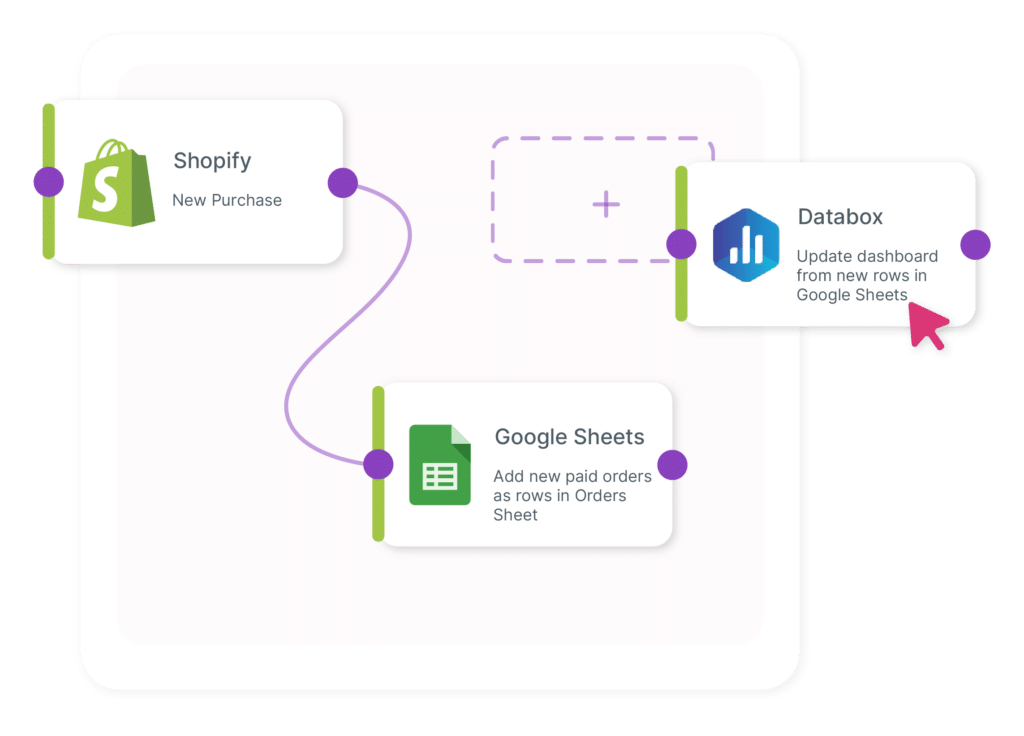
Automation Platforms are here to help!
Overall, a marketing automation platform provides digital agencies with a unified and holistic view of clients’ marketing efforts. As well as streamlines operations and enhances data-driven decision-making and improves overall marketing performance.
The beauty of automation tools such as ConnectorEngine is that you can make workflows as simple or complex as required. Whilst achieving your client’s marketing goals quickly and efficiently.
Get in touch with the team or apply for a trial to learn more.

